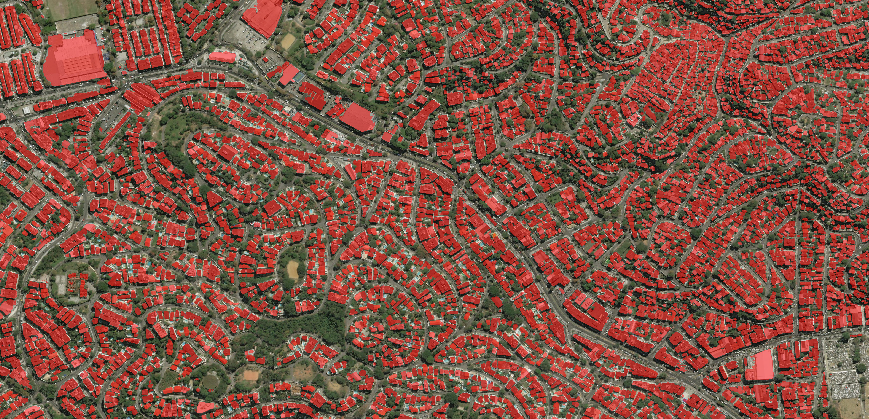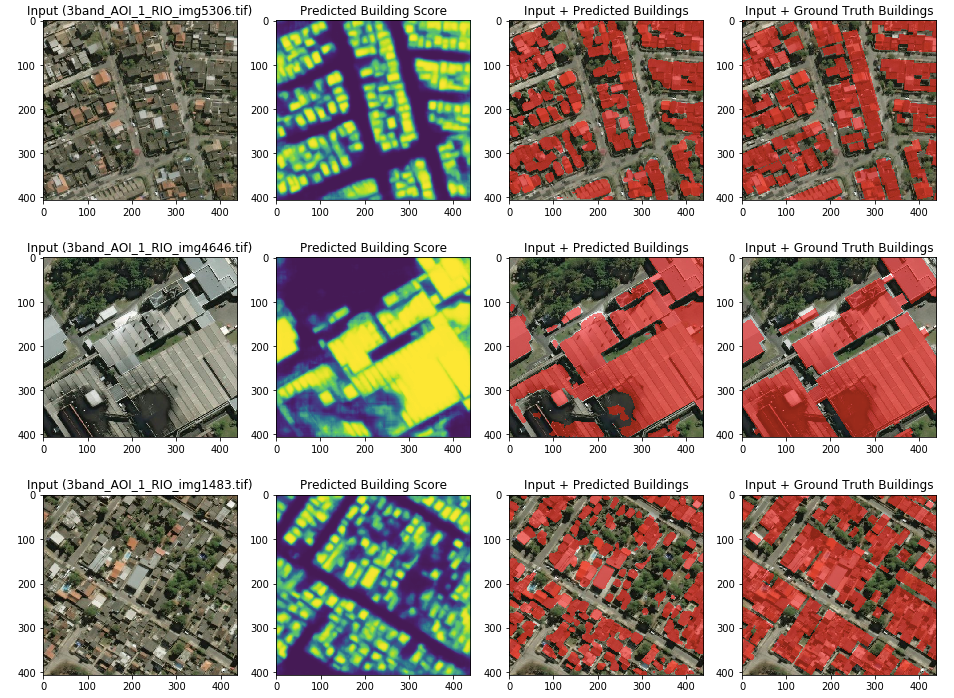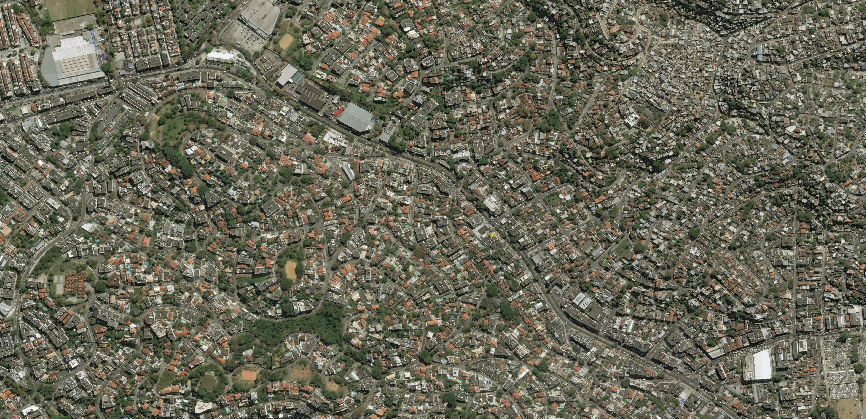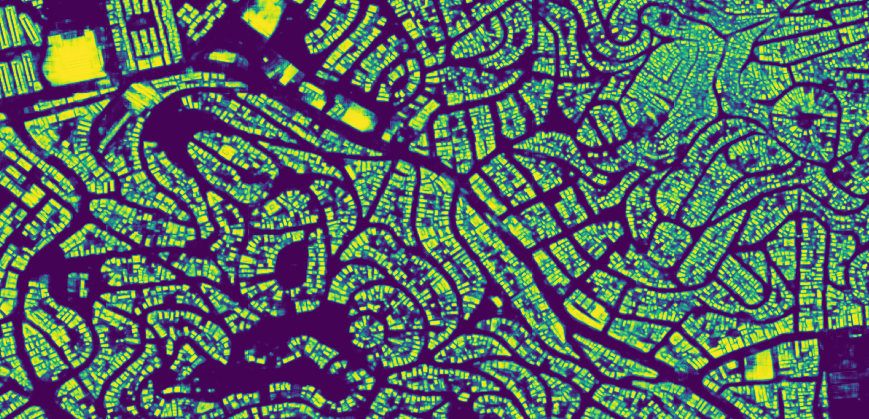motokimura / Spacenet_building_detection
Projects that are alternatives of or similar to Spacenet building detection
SpaceNet Building Detection
This repository privides some python scripts and jupyter notebooks to train and evaluate convolutional neural networks which extract buildings from SpaceNet satellite images.
Dependency
Usage
0. Clone this repo
$ PROJ_DIR=~/spacenet_building_detection # assuming you clone this repo to your home directory
$ git clone --recursive https://github.com/motokimura/spacenet_building_detection.git $PROJ_DIR
1. Download SpaceNet dataset
Download satellite images and ground-truth building footprints (of SpaceNet AOI-1 Rio). Assuming you already configured AWS CLI to download the data from AWS S3.
$ cd $PROJ_DIR/data
# Download processed 200mx200m tiles of AOI 1 (3.4 GB) with associated building footprints
$ aws s3api get-object --bucket spacenet-dataset --key AOI_1_Rio/processedData/processedBuildingLabels.tar.gz --request-payer requester processedBuildingLabels.tar.gz
$ tar -xvf processedBuildingLabels.tar.gz
$ cd processedBuildingLabels
$ tar -xvf 3band.tar.gz
$ cd vectordata
$ tar -xvf geojson.tar.gz
# Download the Source Imagery Mosaic (3-band = 2.3 GB and 8-band = 6.5 GB)
$ cd $PROJ_DIR/data
$ aws s3api get-object --bucket spacenet-dataset --key AOI_1_Rio/srcData/rasterData/3-Band.tar.gz --request-payer requester 3-Band.tar.gz
$ tar -xvf 3-Band.tar.gz
You can find more details here.
2. Build Docker image
Build docker image to setup the environment to preprocess SpaceNet dataset and train/evaluate convolutional neural networks.
$ cd $PROJ_DIR/docker
$ bash build.sh
I strongly reccomend you to use docker because you may have some troubles to install some geo-spatial data processing libraries. In case you don't want to use docker, you have to install additional dependencies described in Dockerfile.
3. Preprocess SpaceNet dataset
Convert SpaceNet ground-truth building footprints from GeoJSON into building mask images.
Run docker container by following:
$ cd $PROJ_DIR/docker
$ bash run.sh
Now you should be inside the docker container you ran. Convert SpaceNet dataset by following:
$(docker) cd /workspace/src/features
$(docker) python build_labels.py ../../data/processedBuildingLabels/3band ../../data/processedBuildingLabels/vectordata/geojson ../../data/buildingMaskImages
Now you will find many pairs of satellite images and building mask images
in $PROJ_DIR/data/processedBuildingLabels/3band and $PROJ_DIR/data/buildingMaskImages respectively
like below:
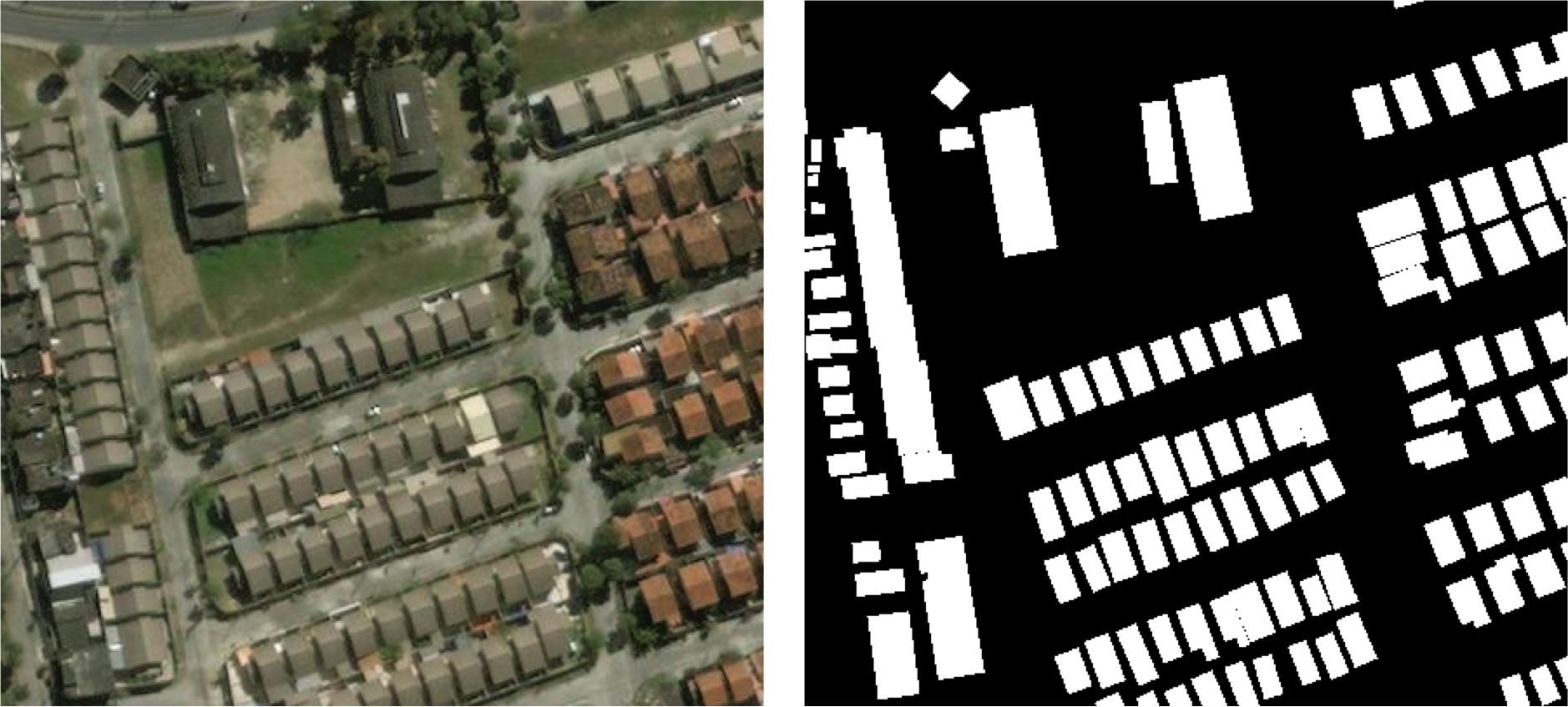
4. Train U-Net
Train U-Net, a convolutional neural network originaly developed for medical image segmentation.
Train U-Net with SpaceNet dataset by following:
$(docker) cd /workspace/src/models
$(docker) python train_model.py ../../data/dataSplit ../../data/processedBuildingLabels/3band ../../data/buildingMaskImages
You can check training status and validation accuracy from TensorBoard:
# Open another terminal window outside the container and type:
$ cd $PROJ_DIR/docker
$ bash exec.sh
# Now you should be inside the container already running. Start TensorBoard by following:
$(docker) tensorboard --logdir /workspace/models
Then, open http://localhost:6006 from your browser.

5. Evaluate U-Net
Evaluate U-Net with jupyter notebook.
Launch jupyter notebook by flollowing:
$(docker) cd /workspace/notebooks
$(docker) jupyter notebook
Then, open http://localhost:8888 from your browser.
Default password is passw0rd as defined in Dockerfile.
Note that you may need to modify the path to pre-trained model defined in the notebooks below.
5.1 Quantitative evaluation
Open this notebook.
5.2 Qualitative evaluation on test tile-images
Open this notebook to see segmentation results on tile images in test-plit.
Output examples:
5.3 Qualitative evaluation on mosaic images
Open this notebook to see segmentation results on source mosaic images.
Output examples:

